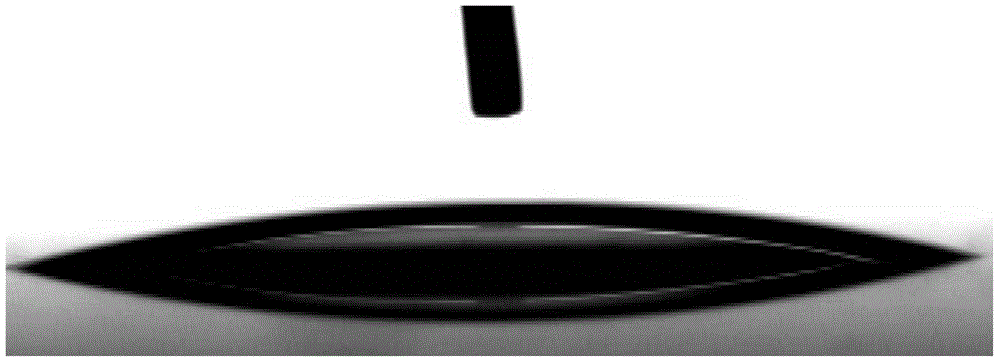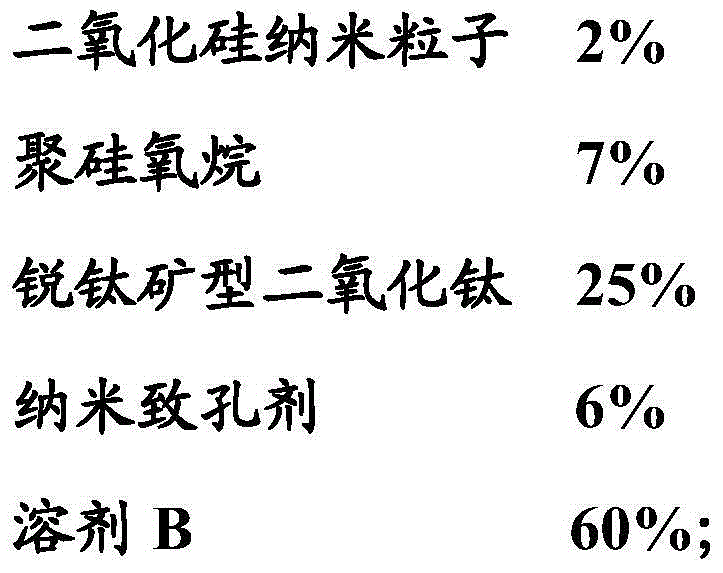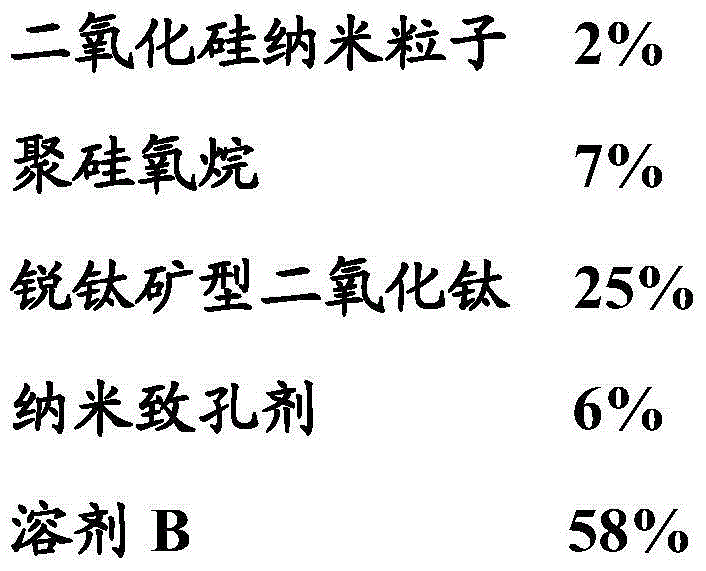Novel nanometer self-cleaning paint and nanometer self-cleaning glass containing coating formed by paint
A nanometer self-cleaning and coating technology, applied in the direction of coating, etc., can solve the problems of self-cleaning effect to be improved and low light transmittance, and achieve the effect of improving self-cleaning ability, high light transmittance, and wide applicability
- Summary
- Abstract
- Description
- Claims
- Application Information
AI Technical Summary
Problems solved by technology
Method used
Image
Examples
preparation example Construction
[0021] The invention discloses a method for preparing a novel low-refractive-index self-cleaning glass, which comprises the following steps:
[0022] 1) Spray the nano self-cleaning coating evenly on the glass surface;
[0023] 2) drying the self-cleaning glass obtained in step 1) at normal temperature or under heating conditions to obtain a self-cleaning glass with a nanometer self-cleaning film;
[0024] 3) Soak the self-cleaning glass obtained in step 2) in solvent A to remove the nano-porogen in the film layer, dry, and form a nano-concave-convex structure in the film layer; or,
[0025] Spray solvent A on the self-cleaning glass surface obtained in step 2), let it stand, remove the solvent A that has dissolved the nano-porogen, dry, and form a nano-concave-convex structure at the film layer;
[0026] Wherein, the nanometer self-cleaning coating comprises the following components: (a) silica nanoparticles; (b) polysiloxane; (c) anatase titanium dioxide; (d) nanoporogen an...
Embodiment 1
[0076] Use 400-mesh glass polishing powder to polish the glass surface with a rotating disk, then rinse the dirt and polishing powder on the glass surface with water, dry it naturally in a clean place, and spray the nano self-cleaning coating evenly on the glass surface with a spray gun (speed 1.2 m / s), stand at room temperature for 5 minutes, and a self-cleaning glass coated with a self-cleaning film can be obtained. The self-cleaning glass surface is sprayed with solvent A, left to stand, the solvent A in which the nano-porogen is dissolved is removed, and dried to form a nano-concave-convex structure on the film layer. Then the prepared self-cleaning glass was tempered at 700°C for 650 seconds. The treated self-cleaning glass not only maintained good superhydrophilic properties, but also the crystal form of titanium dioxide on the glass surface did not change. Strength and hardness are improved. After testing, the light transmittance of the glass is 95%, its contact angle ...
Embodiment 2
[0081] Two pieces of 5cm*5cm are taken from the self-cleaning glass (95% light transmittance) in Example 1, soaked in a methylene blue solution with a concentration of 1mmol / l for 1 hour, take it out, dry the back, and place it vertically in a dark place. After the methylene blue solution is naturally dried, put it under the ultraviolet lamp (45W) for half an hour, and then test the light transmittance of the glass to 95%, indicating that the methylene blue on the glass surface has been completely decomposed, and the self-cleaning glass has better light catalytic performance.
PUM
| Property | Measurement | Unit |
|---|---|---|
| Average particle size | aaaaa | aaaaa |
| Concentration | aaaaa | aaaaa |
| Particle size | aaaaa | aaaaa |
Abstract
Description
Claims
Application Information
 Login to View More
Login to View More - R&D
- Intellectual Property
- Life Sciences
- Materials
- Tech Scout
- Unparalleled Data Quality
- Higher Quality Content
- 60% Fewer Hallucinations
Browse by: Latest US Patents, China's latest patents, Technical Efficacy Thesaurus, Application Domain, Technology Topic, Popular Technical Reports.
© 2025 PatSnap. All rights reserved.Legal|Privacy policy|Modern Slavery Act Transparency Statement|Sitemap|About US| Contact US: help@patsnap.com



